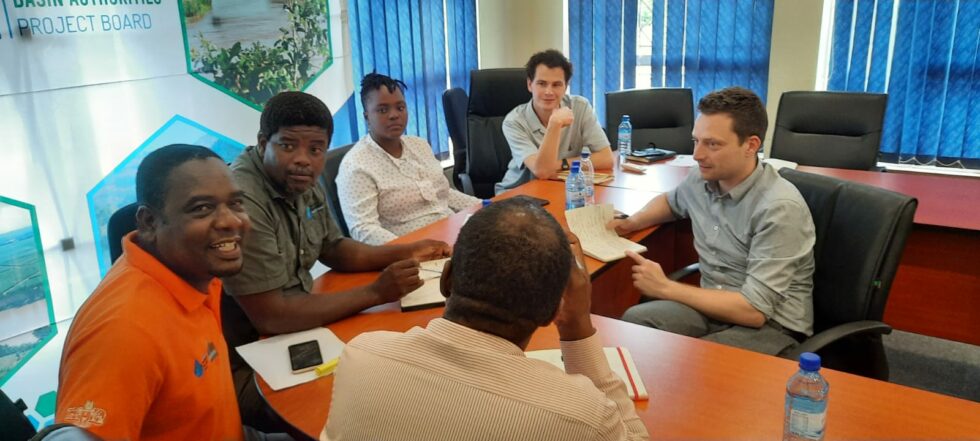Africa faces immense water challenges. In the southern region, where the Maputo and Umbuluzi river catchments and delta’s cover parts of Mozambique, Eswatini and South Africa, drought threatens the area’s development. The ‘Global water availability forecasting service to support water security’ (GLOW)-consortium works to address this problem. To find out how, we spoke to Ralf Linneman, Water Management Advisor at HydroLogic and project manager of GLOW, as part of our ‘Innovation in Progress’-series.
Competition for fresh water
‘Drought exacerbates existing challenges in the Southern African region, such as food security and sustainability’, explains Ralf. ‘Population growth, economic development and the deterioration of water quality and availability brought on by climate change all contribute to increased competition for fresh water. But that’s not all. Take cyclone Freddy, for example; in a short amount of time, extreme heavy rains caused devastating flooding. For both the day-to-day and seasonal management of water resources, these issues require up-to-date information on forecasted water availability.’
The GLOW-project was initiated to address this need. Ralf not only acts as project manager; he was also involved in creating the operational system that GLOW uses. ‘The goal of this project is to pilot an operational service that forecasts - availability and demand - water resource information. Focusing on water stored in reservoirs, soils and groundwater bodies, the project spans across an entire cross-border water resources system’, Ralph adds.
Dutch and Southern African expertise brought together
For this project, HydroLogic is working together with FutureWater and Emanti. Ralf explains: ‘HydroLogic specialises in providing decision support services for water managers through HydroNET; an open platform which translates massive amounts of data into useable information for water managers. FutureWater’s area of expertise is evaluation and planning: how do you optimally divide the available water? And Emanti is our local partner who understands all the main social, political, legal and cultural characteristics of users and catchments in Southern Africa.’

Transboundary water security
‘What makes this project unique is using and combining proven techniques to produce operational water availability and demand, up to several months in advance’, Ralf tells us. ‘This will help water managers to make timely decisions. GLOW will also provide this information on a transboundary catchment level. That means water managers from different countries work together to share information and make decisions that are primarily in the interest of the entire catchment – and not just for their own area’, Ralf explains.
‘Different existing models and systems interact with each other. One of the problems we had in this region was a lack of data; it’s hard to build and validate a complex system without it. That’s why we chose to work with techniques that have already been successful elsewhere. We also continuously talk to other HydroNET-users about their experiences such as what were their challenges and how did they resolve them? This way you can come up with a package of well working water management solutions.’
Co-creation with end users
Another way to gather knowledge is by speaking to all of the African parties involved: ‘Like the Joint River Basin Authority in Eswatini, an important stakeholder in this project’, Ralf says. ‘I’ve spent a lot of time talking to the end users – the water managers in the three participating countries. They are the ones making decisions on how to divide the scarce water. I often heard: “I’m missing information on this or on that, can you do something about this?” For me personally, it became my drive to support them in making water management in Southern Africa more sustainable. Understanding their needs and challenges is the starting point in achieving this.’

Pains and gains
Organising workshops is a good way to gain that understanding. Ralf adds: ‘We recently held one in Eswatini to gather regional knowledge. By using the concept of “pains and gains”, we identified the most important stakeholders, placed ourselves in their role and came up with direct solutions that benefit their interests. The fact that the local partners we invited also included their water stakeholder they work with, such as agricultural co-operations and disaster management organisations in the workshop was something I really appreciated. This not only demonstrated their involvement, but it also helped us a great deal to make sure that what we build fits well to the challenges they’re facing.’
Don’t miss out on events or announcements
Subscribe to the Partners for Water newsletter on the homepage.